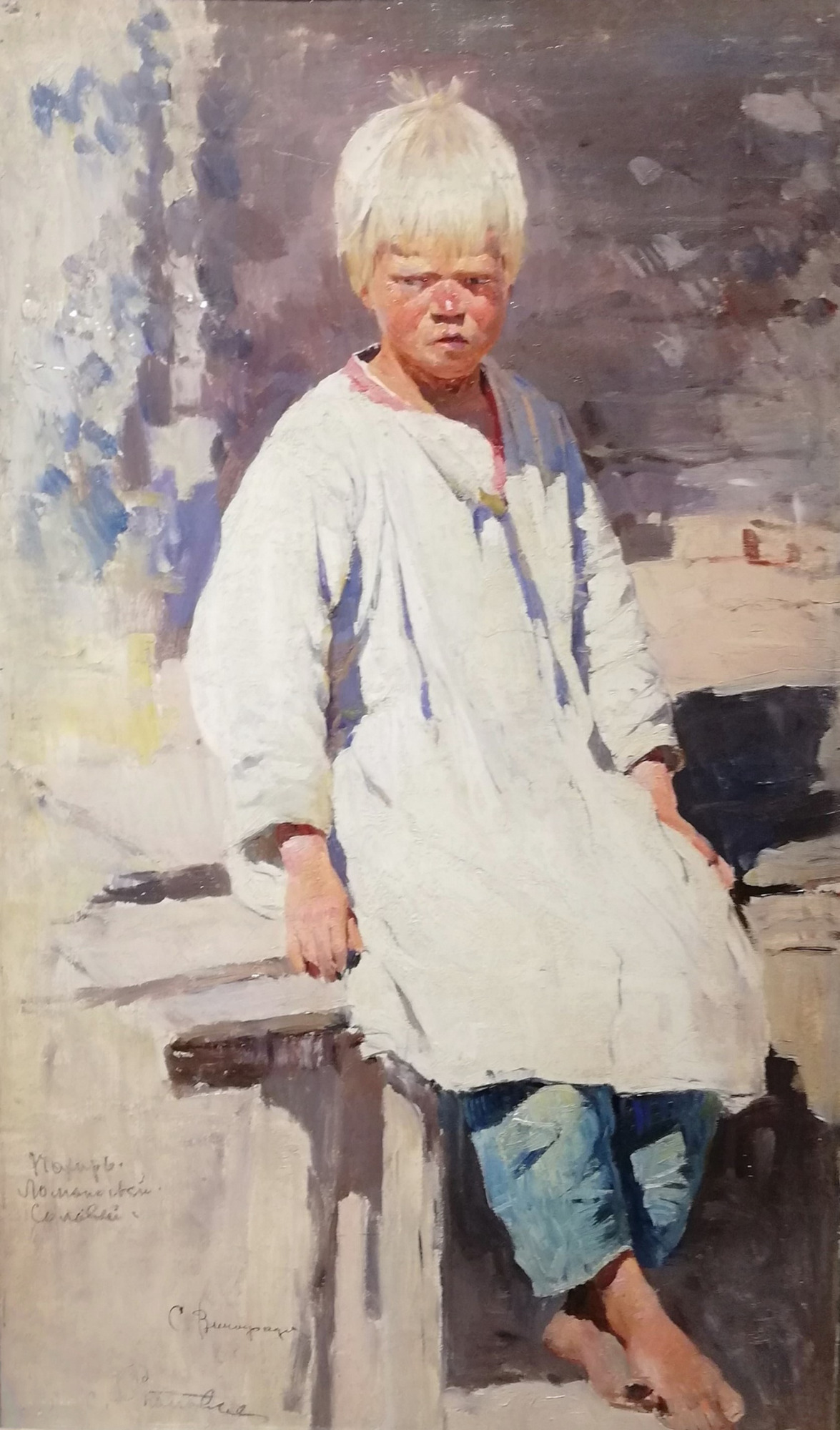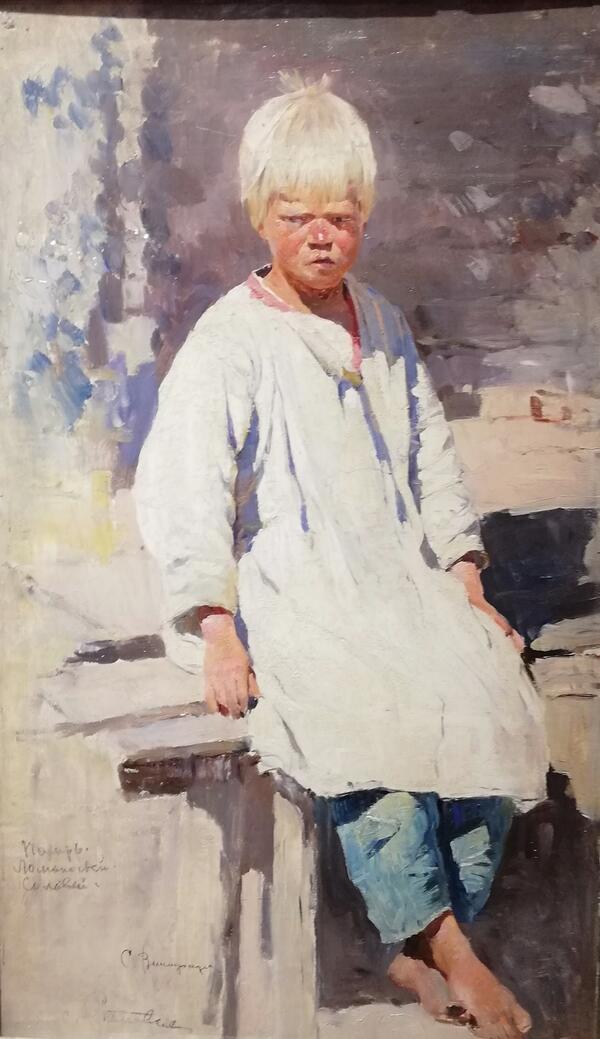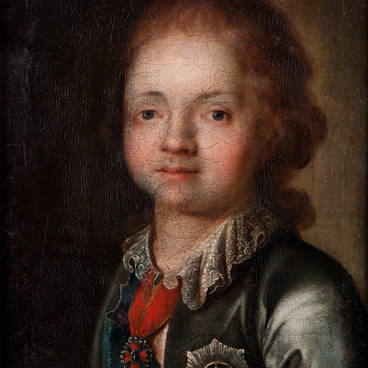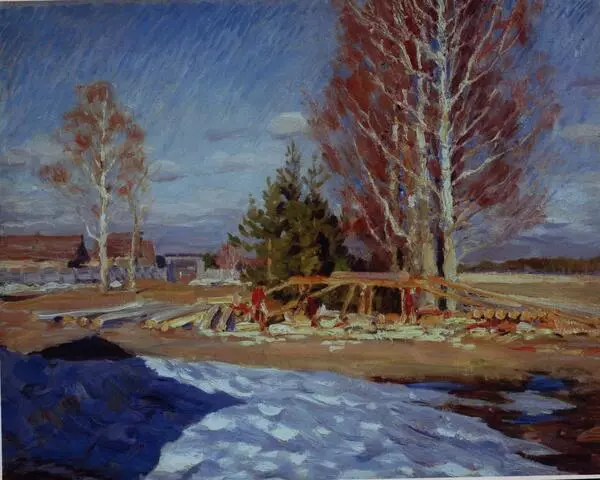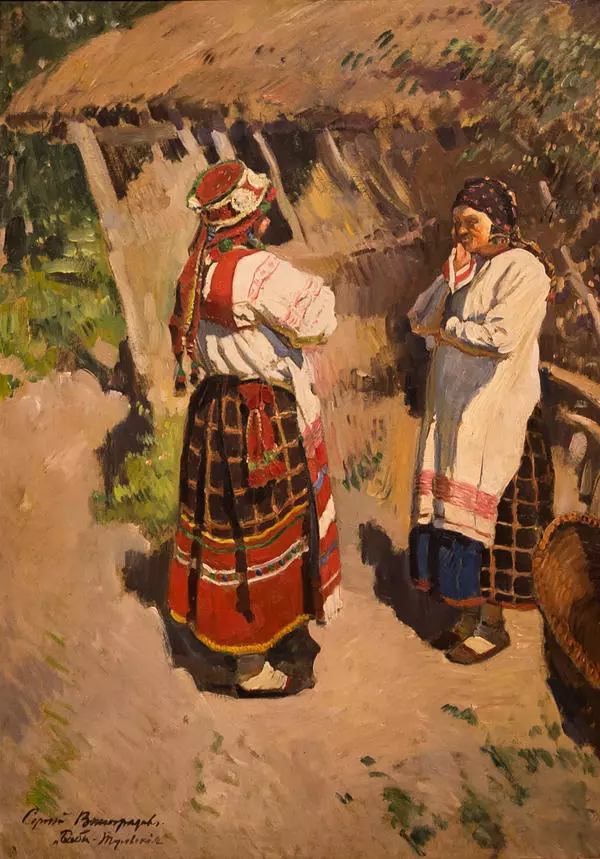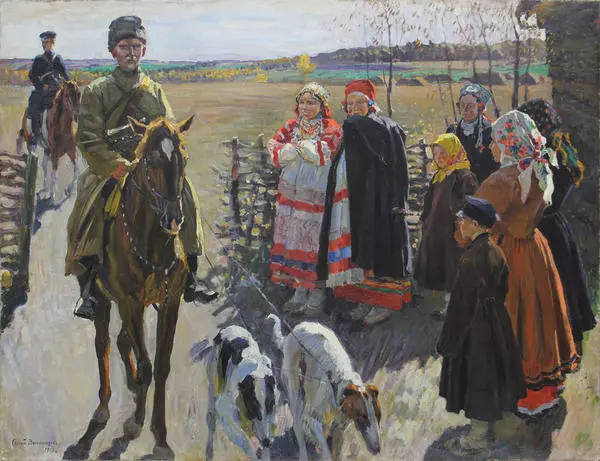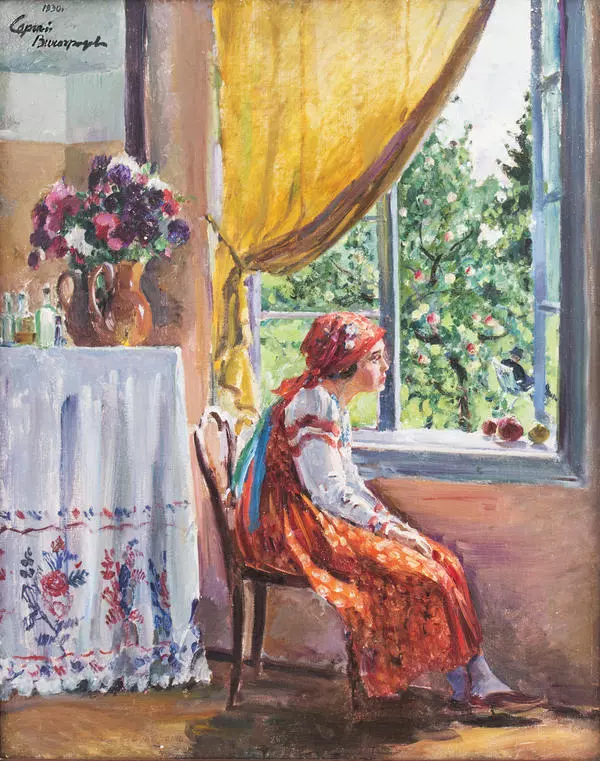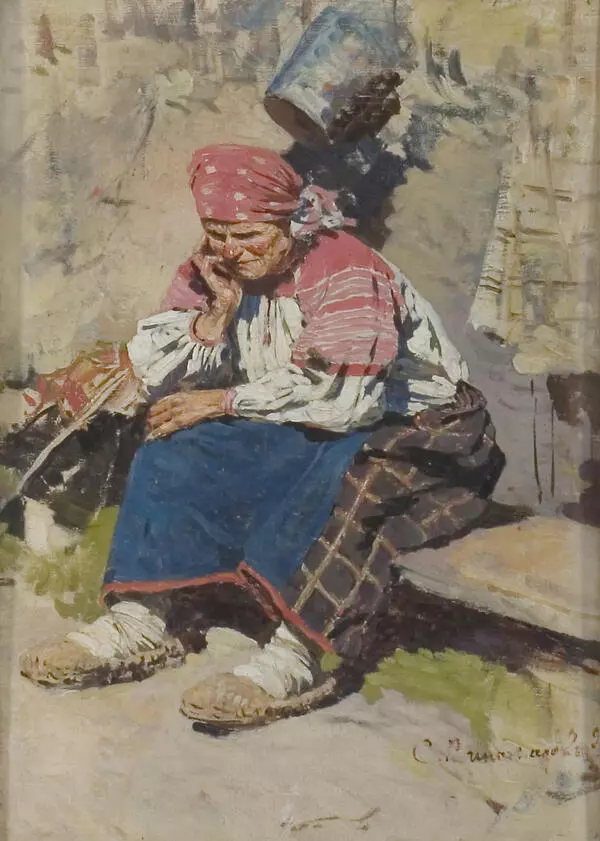Vinogradov Sergey Arsenievich (1869–1938) was a Russian artist, painter and graphic artist, one of the founders of the Union of Artists of Russia. He was born in a large clerical family. He became interested in drawing from an early age. Parents supported their son in his hobby, and at the age of 11 Vinogradov went to Moscow to enter the Moscow School of Painting, Sculpture and Architecture. His teachers were Vladimir Makovsky, Illarion Pryanishnikov, Evgraf Sorokin, Vasily Polenov. The artist graduated from college in 1889 and then went to study at the Academy of Arts in St. Petersburg. But for health reasons, he was forced to interrupt his studies and return to Moscow.
Appealing to genre scenes, sketches and scenes of village life is most characteristic to the artist’s early period. These topics were especially active in his art in the 1890s when he created his works “In the hut” (1890), “A Peasant Woman with a Rake. Day laborer. Study “(1891),"Women. Girlfriends ‘(1893),"Children ‘(1895), ’ On the River ‘(1899), ’ Beggars ‘(1899). The genre paintings based on the life of the village and the Russian provinces were close in spirit to the Itinerants tradition.
Sergey Vinogradov traveled around Russia a lot. The beauty of old Russian cities, rural landscapes and noble estates captivated the artist, and in the 1900-1910s he turned to landscape painting and depictions of old Russian estates. From 1914 to 1917, the artist created patriotic posters on the theme of the First World War.
In 1925, Vinogradov moved to Riga to establish his own art school where he taught painting and the basics of drawing. Already being a mature master, the artist again returns to the depiction of rural life and types. In the second half of the 1920s, he created such works as “Village Girls” (1927) and “Boy on a Horse” (1928).
The sketch “Village Boy on a Bench” from the Zaraysk Kremlin collection is one of the examples of the master’s works on such kind of a theme. The canvas depicts a barefoot village boy illuminated by the bright summer sun. He is dressed in a loose shirt without a belt and blue pants, his hair is sunburned, his nose is burned, and his hands are chapped. Seizing a moment among the important boyish affairs, he sat down on a bench and thought about something. The artist was able to capture this and wrote a sketch with quick large strokes. The snow-white shirt gleams in the bright sun, so we hardly see folds on it, only a few in the upper part. Dark dense shadows contrast with the boy’s clothes. The background behind is depicted conditionally, but nevertheless, one can guess the corner of a village house, on which the sun glares play.
Vinogradov’s works are now kept in many private and museum collections, including the State Tretyakov Gallery, the State Russian Museum, the Pushkin State Museum of Fine Arts and many others.
Appealing to genre scenes, sketches and scenes of village life is most characteristic to the artist’s early period. These topics were especially active in his art in the 1890s when he created his works “In the hut” (1890), “A Peasant Woman with a Rake. Day laborer. Study “(1891),"Women. Girlfriends ‘(1893),"Children ‘(1895), ’ On the River ‘(1899), ’ Beggars ‘(1899). The genre paintings based on the life of the village and the Russian provinces were close in spirit to the Itinerants tradition.
Sergey Vinogradov traveled around Russia a lot. The beauty of old Russian cities, rural landscapes and noble estates captivated the artist, and in the 1900-1910s he turned to landscape painting and depictions of old Russian estates. From 1914 to 1917, the artist created patriotic posters on the theme of the First World War.
In 1925, Vinogradov moved to Riga to establish his own art school where he taught painting and the basics of drawing. Already being a mature master, the artist again returns to the depiction of rural life and types. In the second half of the 1920s, he created such works as “Village Girls” (1927) and “Boy on a Horse” (1928).
The sketch “Village Boy on a Bench” from the Zaraysk Kremlin collection is one of the examples of the master’s works on such kind of a theme. The canvas depicts a barefoot village boy illuminated by the bright summer sun. He is dressed in a loose shirt without a belt and blue pants, his hair is sunburned, his nose is burned, and his hands are chapped. Seizing a moment among the important boyish affairs, he sat down on a bench and thought about something. The artist was able to capture this and wrote a sketch with quick large strokes. The snow-white shirt gleams in the bright sun, so we hardly see folds on it, only a few in the upper part. Dark dense shadows contrast with the boy’s clothes. The background behind is depicted conditionally, but nevertheless, one can guess the corner of a village house, on which the sun glares play.
Vinogradov’s works are now kept in many private and museum collections, including the State Tretyakov Gallery, the State Russian Museum, the Pushkin State Museum of Fine Arts and many others.
